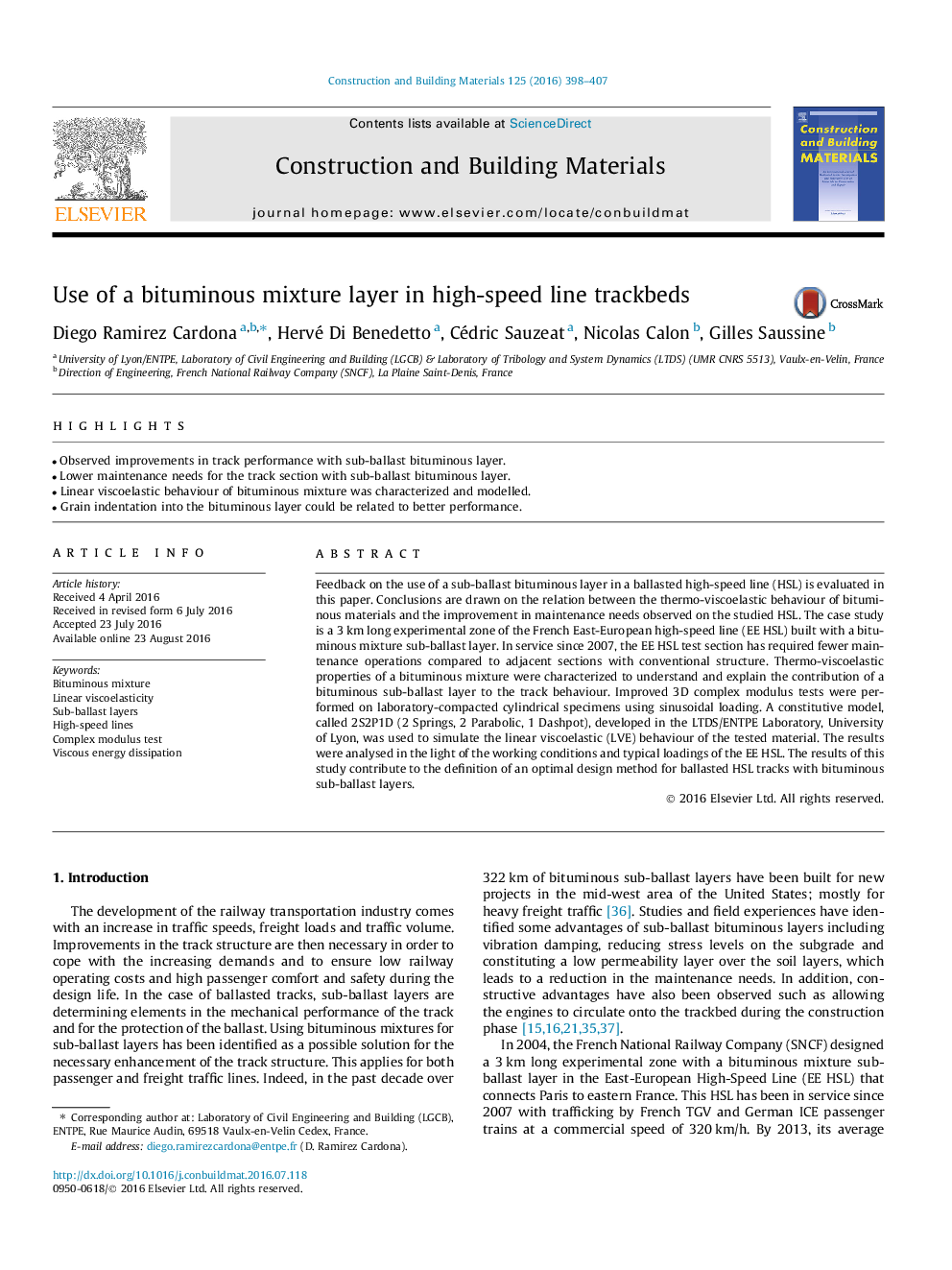| Article ID | Journal | Published Year | Pages | File Type |
|---|---|---|---|---|
| 4918628 | Construction and Building Materials | 2016 | 10 Pages |
Abstract
Feedback on the use of a sub-ballast bituminous layer in a ballasted high-speed line (HSL) is evaluated in this paper. Conclusions are drawn on the relation between the thermo-viscoelastic behaviour of bituminous materials and the improvement in maintenance needs observed on the studied HSL. The case study is a 3Â km long experimental zone of the French East-European high-speed line (EE HSL) built with a bituminous mixture sub-ballast layer. In service since 2007, the EE HSL test section has required fewer maintenance operations compared to adjacent sections with conventional structure. Thermo-viscoelastic properties of a bituminous mixture were characterized to understand and explain the contribution of a bituminous sub-ballast layer to the track behaviour. Improved 3D complex modulus tests were performed on laboratory-compacted cylindrical specimens using sinusoidal loading. A constitutive model, called 2S2P1D (2 Springs, 2 Parabolic, 1 Dashpot), developed in the LTDS/ENTPE Laboratory, University of Lyon, was used to simulate the linear viscoelastic (LVE) behaviour of the tested material. The results were analysed in the light of the working conditions and typical loadings of the EE HSL. The results of this study contribute to the definition of an optimal design method for ballasted HSL tracks with bituminous sub-ballast layers.
Related Topics
Physical Sciences and Engineering
Engineering
Civil and Structural Engineering
Authors
Diego Ramirez Cardona, Hervé Di Benedetto, Cédric Sauzeat, Nicolas Calon, Gilles Saussine,
